Aegar, the Freezing Flame is one of the hottest cards in Kaldheim. It’s a powerhouse, an uncommon legendary in another post-Dominaria set employing them to define its archetypes. It uses Ikoria’s new design technology of excess damage in a whole new way. It’s also emblematic of some of Kaldheim’s overarching game design issues.
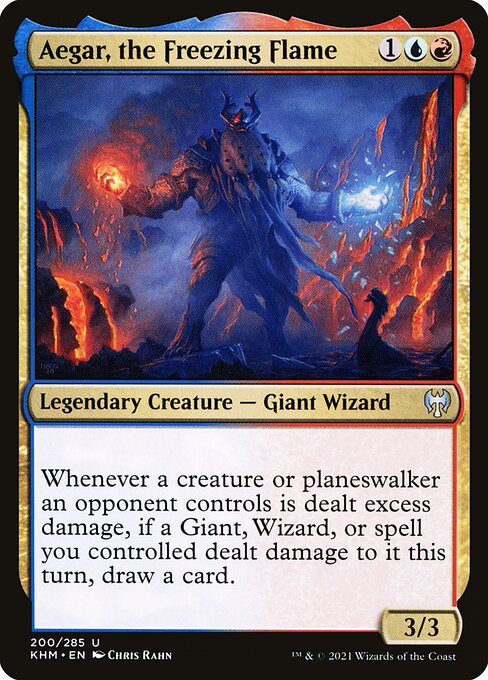
Playing With Power
Aegar is my favorite card to play with in Kaldheim. It feels amazing to upgrade my removal spells into cantrips. It curves so nicely into Demon Bolt. It both enables Squash and converts it into one of the best Doom Blades of all time. With three high-quality burn spells, Aegar is generally easy to enable and almost impossible to overcome once he gets going. And even on an empty board, he single-handedly invalidates small creatures by being a being a Psychic Membrane stapled to a Centaur Courser with the second best creature type in the set (behind Shapeshifter, aka creature type ALL).
But all that this really establishes is that Aegar is very, very powerful. Frankly, Aegar is too powerful.
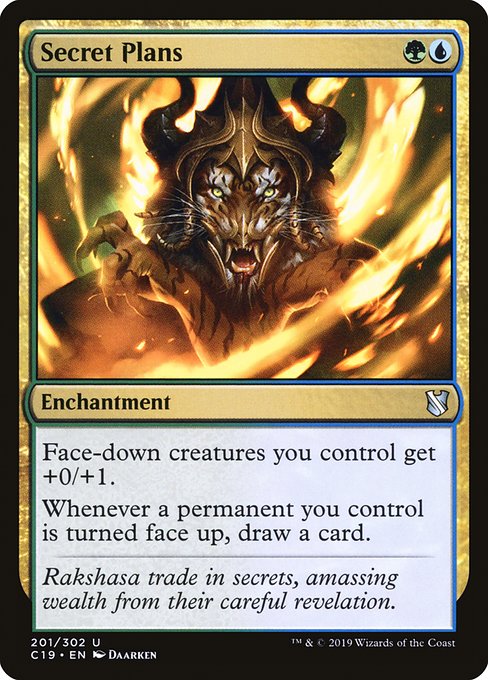
Reward without the Work
Generally, build arounds—especially archetype-defining build arounds—encourage you commit to a specific subset of cards. They allow cards to be more than the sum of their parts. And perhaps most critically, they allow below par cards to rise above their station. Aeger nails the first two criteria, but flubs the third.
Kaldheim has three excellent common burn spells in Frost Bite, Demon Bolt, and Squash. None of them requires help in Limited, so what’s the point of making a card that takes red’s best commons and makes them even better? Aegar doesn’t challenge you to build around giants or wizards; he’s a rich-get-richer card which takes excellent 1-for-1s and turns them into 2-for-1s. That’s definitely a fun thing to do—but Aegar would probably be more balanced and fun to build around if he didn’t have outstanding burn to work with, he wasn’t a cheap creature, and he didn’t curve perfectly into Demon Bolt and Squash.
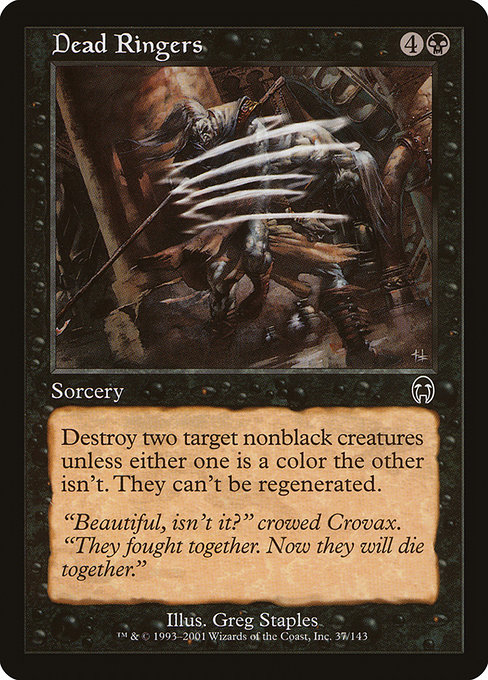
On-Board Tricks
Aegar is a rather unfocused card. His obvious use is to work alongside burn spells. But he also combos with himself. And other giants. And other wizards. I still see people block Inga, Rune-Eyes or Narfi, Betrayer King and concede when Aegar’s card draw trigger goes onto the stack (that’s right, the king’s a wizard, not a noble). When a card has multiple different abilities jumbled together into one, it’s a lot easier to forget everything it does. Magic learned this painful lesson with Lorwyn and introduced New World Order to make the battlefield a bit easier to keep track of—Kaldheim seems to be straining against that boundary.
Kaldheim masquerades as a tribal set, but it really isn’t. It has minor tribal elements, mostly at higher rarities, and those tribes are inconsistent. Skemfar Avenger supports Elf + Berserker decks while Harald, King of Skemfar prefers Elf + Warrior decks and most other cards only care about Elves. The majority of giants-matter cards only care about giants, but Aegar, the Freezing Flame, Frostpyre Arcanist, and Cyclone Summoner buck the trend.
These subtle inconsistencies make it much easier to misremember how cards function—as game designers, we generally want to set our players up for success, not created trap doors to mistakes. And these subtle inconsistencies are all over Kaldheim. Priest of the Haunted Edge checks your snow lands, Spirit of the Aldergard checks your snow permanents, and Frost Augur checks all snow cards (even though the similar Search for Glory and The Three Seasons only grab permanents). Add in the sheer amount of mechanics and mini-mechanics like second-spell-matters or exile-a-creature-card-from-graveyard and you reach a disproportionate cognitive load simply because of how much the mind needs to juggle.
All of this is less of a problem in a pandemic-imposed all-digital world where Arena maintains the game state. But Kaldheim could well cross a line for paper Magic. And if so, we won’t see that problem clearly for several more sets, delaying Wizards’ ability to course-correct.
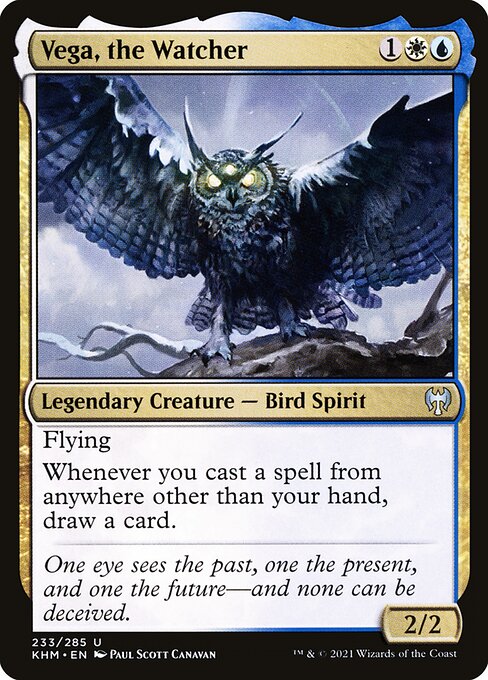
Doubling Up on Effect
Aegar, the Freezing Flame and Vega, the Watcher are a strange pair in the same set. They’re both three-mana creatures that encourage you to build around them and provide the exact same payoff. But where Aegar has three separate abilities, Vega has one. Vega is a more traditional build-around, since it adds value to less powerful Foretell spells rather than specifically supercharging Behold the Multiverse and Demon Bolt. Aegar, on the other hand, lets you eat your cake and have it too—since he can draw cards by himself just by getting into combat.
Vega looks a little silly next to a creature with stronger stats, a better creature type, and an equally powerful ability that triggers off three different things and also self-synergizes. I’m not sure what an appropriate alternative (and likely weaker) payoff for Aegar could be, but I can’t help but wonder what he’d be if he said “Scry 1” instead of “draw a card.”
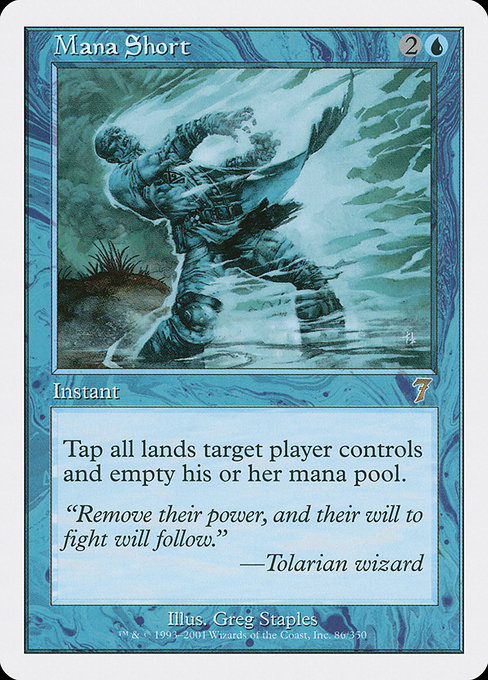
Aegar, the Freezing Flame feels like a microcosm of my main criticism of Kaldheim as a whole. There is a whole lot of good in the individual card, but it’s not cohesive with its environment. Changeling is a great mechanic, but it’s an odd fit in a hardly-tribal set. Snow instant is a cool card type, but Frost Bite is a strange design when it being snow only matters for a single card. Exile-a-creature-card-from-your-graveyard is a cool cut mechanic that’s on almost double the number of supporting cards for WB’s second-spell-matters theme.
Aegar is a complicated and multifaceted card in a complicated and multifaceted set. Perhaps Magic’s audience can handle that increased cognitive load; but as a game designer, I worry. Kaldheim has four or five really cool mechanics that should’ve been saved for a future set, plus about twenty cards that should’ve been streamlined for a better play experience rather than remain as strong and wordy as they are. As they say: no line is worth a scene, nor is any scene worth a movie. And Kaldheim seems to have a lot of great individual lines that don’t serve the whole as fully as they could.
Zachary Barash is a New York City-based game designer and the commissioner of Team Draft League. He designs for Kingdom Death: Monster, has a Game Design MFA from the NYU Game Center, and does freelance game design. When the stars align, he streams Magic (but the stars align way less often than he’d like).

